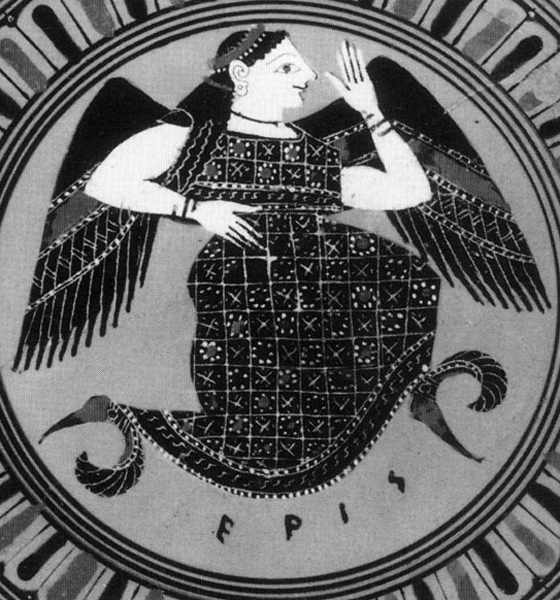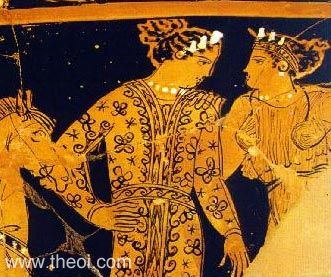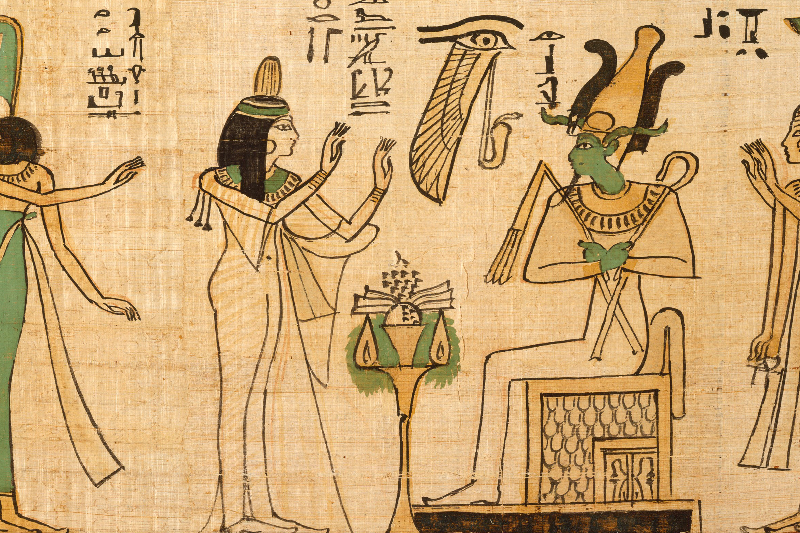Eris is known as the goddess of chaos, thanks largely to the Discordian movement that began in the 1960s. The Principia Discordia details the few and often contradictory principles and teachings of Discordianism. One of the key beliefs in Discordianism is “think for yourself.” If you would follow the teachings of this goddess, you must first learn how to think. The one thing you can be sure of is that if the Goddess of Chaos ever does give you an answer, it will be followed by its opposite: “Yes, and at the same time, a huge, resounding no”. The following is a passage from the Principia Discordia:
The Romans left a likeness of Her for posterity–She was shown as a grotesque woman with a pale and ghastly look, Her eyes afire, Her garment ripped and torn, and as concealing a dagger in Her Bosom. Actually, most women look pale and ghastly when concealing a chilly dagger in their bosoms.
Her geneology is from the Greeks and is utterly confused. Either She was the twin of Ares and the daughter of Zeus and Hera; or She was the daughter of Nyx, goddess of night (who was either the daughter or wife of Chaos, or both), and Nyx’s brother, Erebus, and whose brothers and sisters include Death, Doom, Mockery, and Friendship. And that She begat Forgetfulness, Quarrels, Lies, and a bunch of gods and goddesses like that.
One day Mal-2 consulted his Pineal Gland and asked Her if She really created all of those terrible things. She told him that She had always liked the Old Greeks, but that they cannot be trusted with historic matters. “They were,” She added, “victims of indigestion, you know.”
Suffice it to say that Eris is not hateful or malicious. But She is mischievous, and does get a little bitchy at times.
The Eris of today is vastly different from the one of ancient Greece. Ancient Greeks and Romans, for the most part, saw this goddess as the spirit of strife, discord, and rivalry. She was also sometimes called Enyo (meaning “Warlike”), but Enyo was generally regarded as a separate goddess. She was often depicted as the spirit of war, delighting in human bloodshed. She plays relatively little role in Ancient Greek mythology; when she does appear, it is most often as a servant or companion of Ares (War). The most commonly known myth is the wedding of Peleus and Thetis (the Discordian version is called the Original Snub).
Even in ancient times, the Goddess of Chaos was seen in two very different aspects. The poet Hesiod describes these two aspects: the hateful and the needful. The hateful aspect is the one that leads to wars, brawling, and violent conflict. The needful one is the one that causes people to work harder to be as good as or better than their neighbors, causing all to work to better themselves. The latter is what more heavily influenced modern Discordianism.
Final Thoughts
I do not recommend following the teachings of Eris to those who are faint of heart. The Goddess of Chaos is demanding and unforgiving. She will rarely, if ever, give you answers as some other gods might. She will respond to your prayers and assist you in magical workings, but it will seldom be in the way that you expect it. You will likely have few friends, and you will have a hard time simply accepting anything. She is a lady of hard questions and few answers, but to those who truly accept the chaos that is life, she will never be boring.





